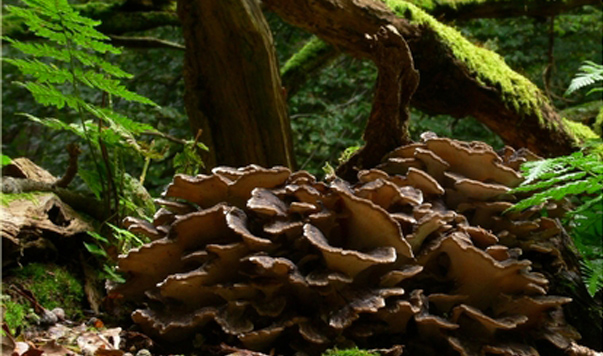המיטאקי הינה פטרייה גדולת ממדים בעלת שימושים רפואיים עתיקי יומין שראשיתם בסין וביפן. המיטאקי נמנית על משפחת הנקבוביים (Polyporaceae), והיא נפוצה בטבע באזורים הרריים בצפון יפן וכן גם בצפון אמריקה ובאירופה, ומגודלת כיום גם בקנה מידה מסחרי נרחב. בטבע, הפטרייה גדלה לרוב סמוך לבסיסם של עצי אלון ועשויה להגיע לקוטר של 50 ס"מ. בדומה לרבות מהפטריות הרפואיות גם בפטרייה זו החומרים הפעילים העיקריים הינם רב-סוכרים המסייעים בשפעול מערכת החיסון. עוצמת פעילותה הרפואית של המיטאקי מתונה, היא נטולת רעילות ומתאימה לשימוש ממושך.
חלקי הצמח בשימוש רפואי
הפטרייה בשלמותה
השפעה ידועה בספרות המקצועית
אדפטוגן, אנטי-ויראלי, אנטי-סרטני, מוריד לחץ דם, מוריד רמות שומנים/כולסטרול בדם, ממריץ/משפעל חיסון, מעודד הרזיה, משקם/מגן כבד, נוגד דלקת, נוגד חמצון.
שימושים מקובלים עיקריים
גידולים ממאירים, כימותרפיה (תמיכה), מחלות ויראליות (מניעה), מחלות ויראליות (טיפול), סרטן (תמיכה ומניעה), סרטן במערכת הרבייה הנשית (תמיכה ומניעה), סרטן הערמונית.
שימושים מקובלים משניים
דלקת הכבד (כרוני), הרזיה (תמיכה), יתר כולסטרול, יתר שומנים בדם, לחץ דם גבוה, מחלות אוטואימוניות, מחלת הנשיקה (מונונוקליאוזיס), סוכרת, פינוי רעלים (דה-טוקסיפיקציה), תסמונת העייפות הכרונית (CFS), תשישות וחולשה.
בטיחות וזהירות
לא ידוע על תופעות לוואי כלשהן או על התוויות-נגד לנטילת הפטרייה. המיטאקי עשויה ליצור תגובה סינרגית עם תרופות היפוגליקמיות ולהגביר השפעתן. בנוסף, היא עלולה להגיב עם וורפארין ובכך להוביל לעליה בערכי INR. עבודות In vitro מצביעות על כך שלפרקצית beta-glucan המופקת ממיטאקי יש השפעה מדכאת, אך לא ציטוטוקסית, על ייצור תאי הדם במינון של 200 mcg/ml. עבודות אחרות מצביעות על כך שפרקציית grifon-D הינה ציטוטוקסית לתאי ערמונית במינון של 480 mcg/ml או יותר.
אין מידע עדכני מוסמך על בטיחות השימוש בפטרייה בעת ההיריון וההנקה, אך לא ידוע גם על נזקים כלשהם משימוש בה.
אופני שימוש ומינונים
טינקטורה: 1:3, 45% אלכוהול, 2-5 מ"ל TID
תמצית יבשה תקנית: 30% פוליסכרידים, 100-200 מ"ג TID
מרתח: 1-3 גרם TID
כחלק מפורמולה: 25-30%
מונוגרף זה נכתב ונערך על ידי גל מ. ראן RH(AHG), MIHA
וכל זכויות היוצרים בו שייכות למחבר


 דילוג לתוכן
דילוג לתוכן